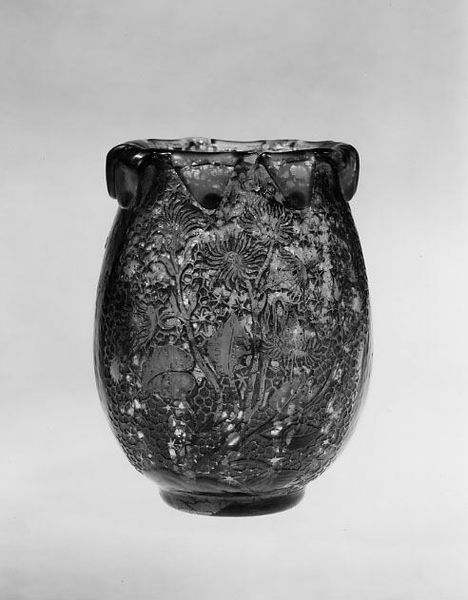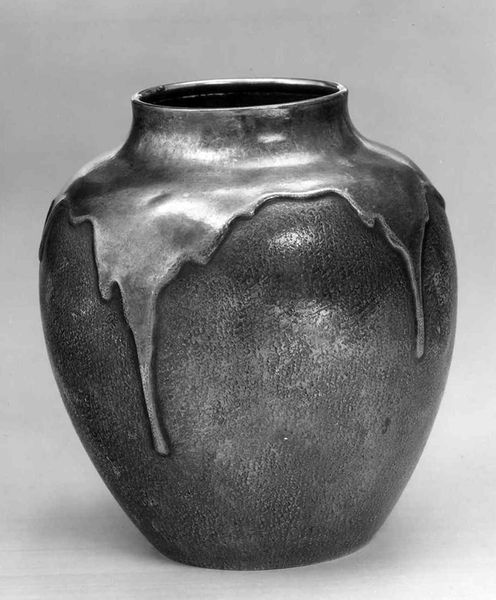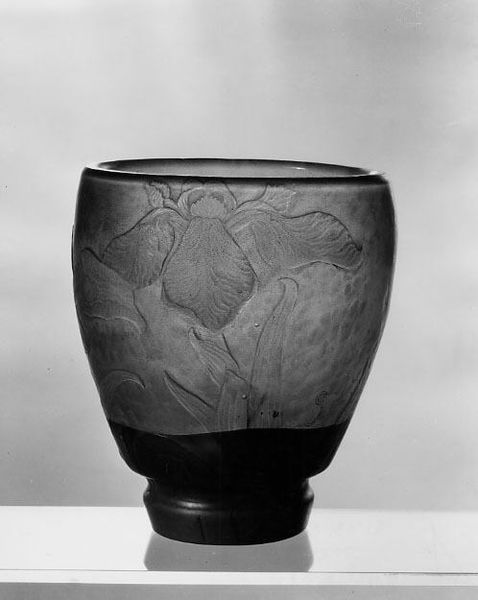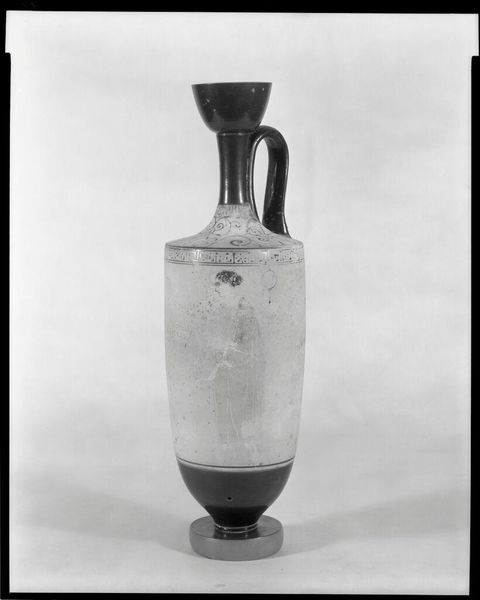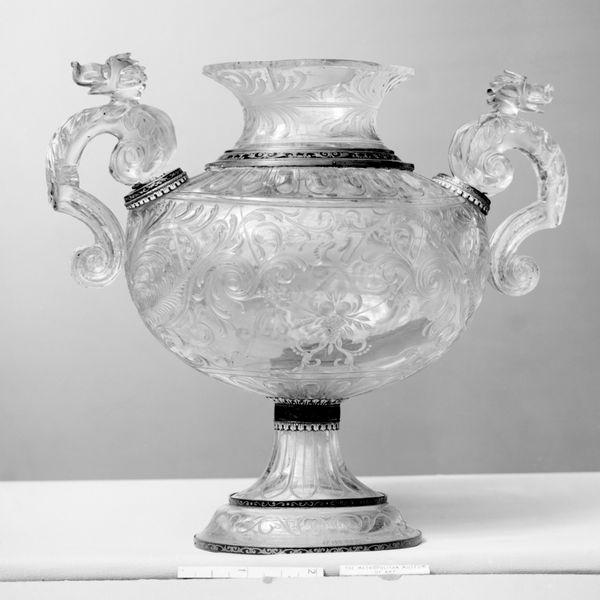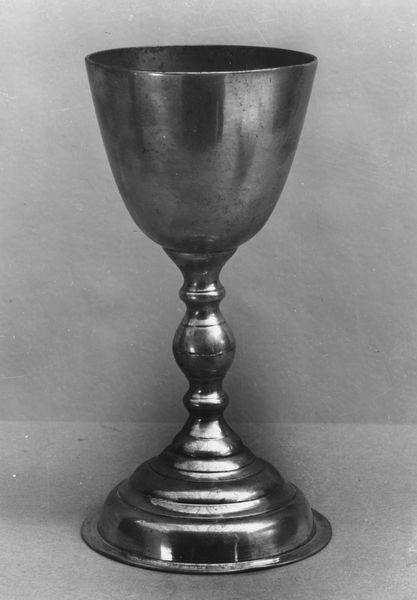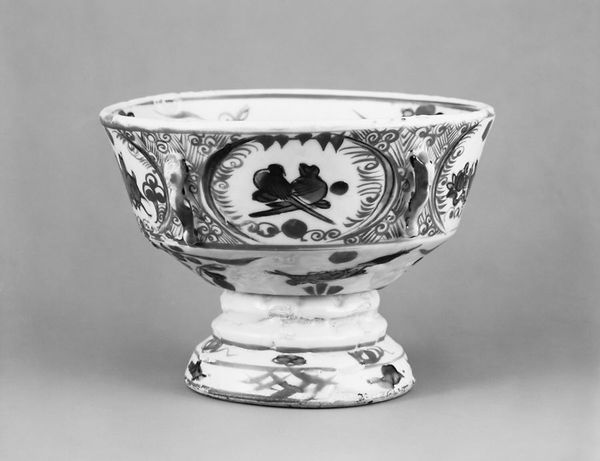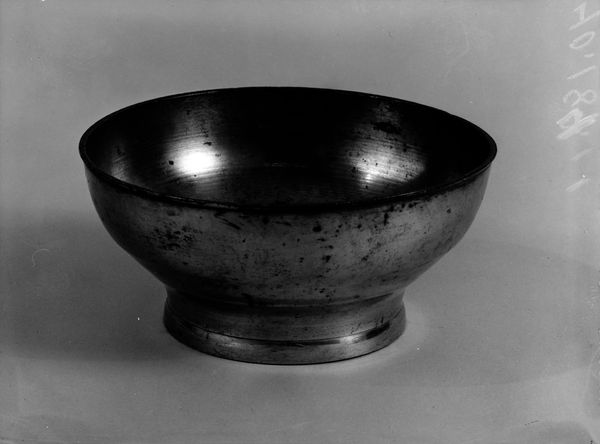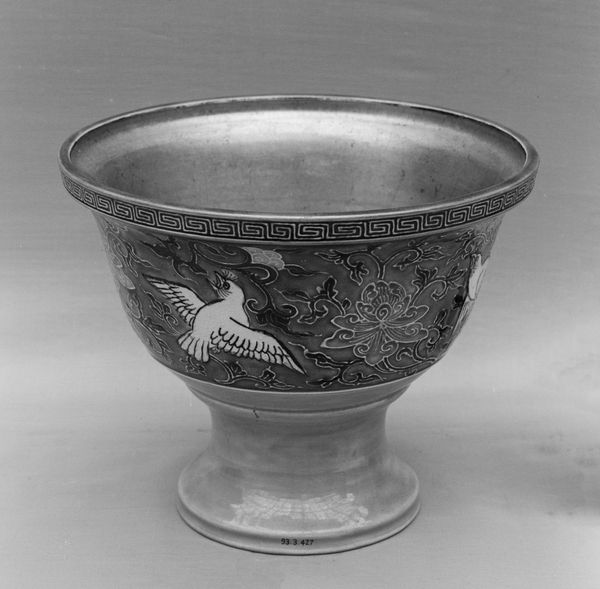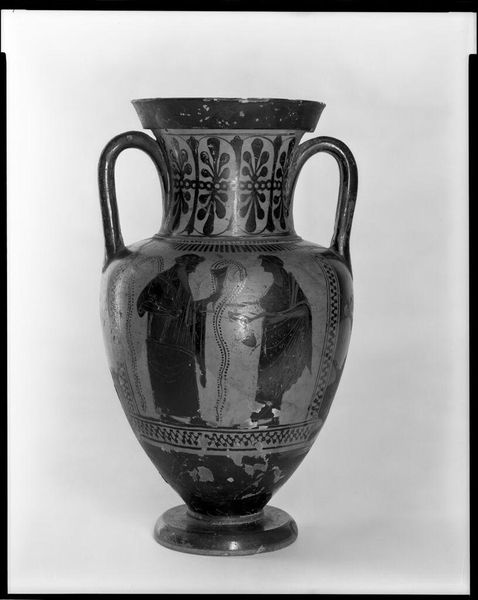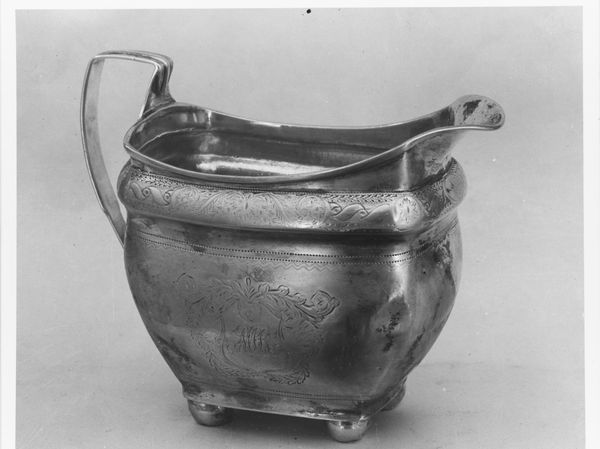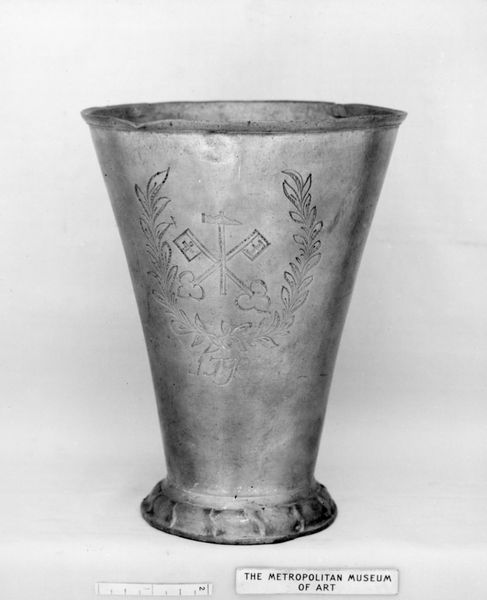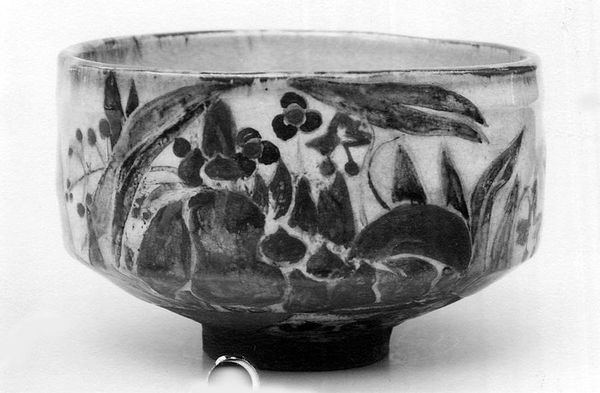
glass, sculpture
#
art-nouveau
#
glass
#
sculpture
#
symbolism
#
decorative-art
Dimensions: H. 4-7/8 in. (12.4 cm.)
Copyright: Public Domain
Editor: Here we have Émile Gallé’s “Cup,” created in 1889. It's a glass sculpture currently residing at the Metropolitan Museum of Art. I’m really drawn to the almost gothic, somewhat eerie mood it gives off, like something from a Victorian fairy tale. What do you see in this piece? Curator: Well, let's consider the Art Nouveau movement of the late 19th century. Gallé was a key figure, and his works often reflected a fascination with nature, but filtered through symbolism. We need to ask: what cultural anxieties or aspirations might this object reflect? The use of glass itself – a fragile, ephemeral material – could be interpreted as commentary on the fleeting nature of beauty and life itself, popular subjects during that period. Do you see any imagery that jumps out at you? Editor: Yes, I can make out insects. Are those dragonflies? Curator: Exactly! Dragonflies, butterflies, and other insects were frequently used in Art Nouveau to represent transformation and the embrace of the natural world. But think about the social context. Industrialization was rapidly changing European societies, and art like this offered a romantic escape. By showcasing nature in stylized form, artisans were offering a sophisticated yet nostalgic experience that played well within bourgeois households. Does that reading shift your understanding of the piece? Editor: It does! Seeing it as a romanticized response to industrial change adds so much depth. It makes you wonder about who actually owned and appreciated pieces like this "Cup." Curator: Precisely! The intended audience shapes our perception, revealing how art participates in broader socio-economic structures of a given period. Considering how social dynamics shaped not only the art objects themselves, but how art gets perceived and preserved by social actors in different eras, is part of how we, as historians, help contemporary museum visitors see artworks differently, sometimes revealing a whole new depth and context. Editor: This really gives me a different way of seeing art objects from the past; thank you.
Comments
No comments
Be the first to comment and join the conversation on the ultimate creative platform.
